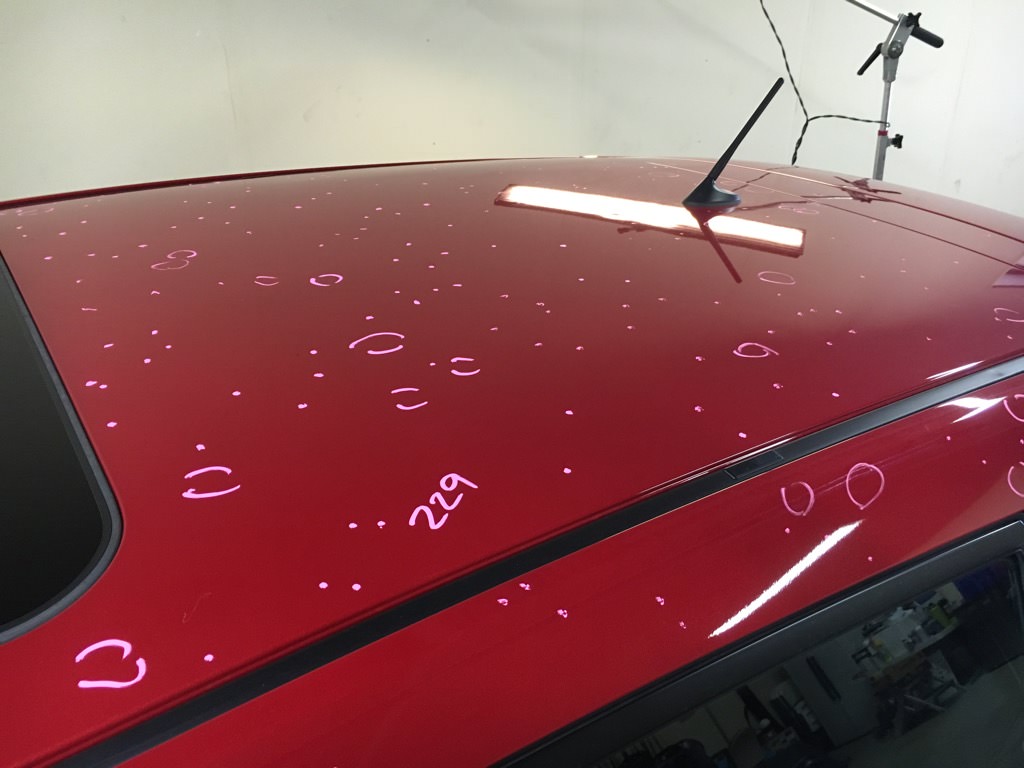
Image Source: Google
Auto hail dent removal is a process that many vehicle owners may need to undergo after their vehicles have been damaged by hailstorms. Hailstorms can cause significant damage to cars, leaving behind dents of various sizes.
Understanding the process of auto hail dent removal can help vehicle owners know what to expect and how their vehicles can be restored to their pre-damaged condition. If you are in search of an auto hail dent removal, you may explore https://www.green-hail.com/.
The Process of Auto Hail Dent Removal
Auto hail dent removal involves several steps to repair the dents caused by hailstorms. Below are the key stages involved in the process:
Assessment of Damage
- Before beginning the repair process, the extent of the damage caused by the hailstorm needs to be assessed.
- Technicians will inspect the vehicle to determine the size and severity of the dents.
Dent Repair Techniques
- There are various techniques used to remove dents caused by hailstorms, including:
- PDR (Paintless Dent Repair): This method involves manipulating the metal back into its original shape without the need for repainting.
- Traditional Dent Repair: For more severe dents, traditional dent repair methods may be used, which involve filling the dent and repainting the affected area.
Paintless Dent Repair (PDR) Process
- PDR is a popular method for removing hail dents as it preserves the original paint of the vehicle. The process typically involves the following steps:
- Clean the damaged area to remove any debris or contaminants.
- Access the back of the dent by removing interior panels or through existing access points.
- Use specialized tools to carefully massage the metal back to its original shape.
- Check the results and make any necessary adjustments to ensure a seamless finish.
Benefits of Auto Hail Dent Removal
There are several benefits to having hail dents removed from your vehicle, including:
Preservation of Vehicle Value
- Removing hail dents helps maintain the resale value of your vehicle.
- Unrepaired dents can lead to rust and further paint damage, decreasing the overall value of the vehicle.
Improved Aesthetics
- Repairing hail dents restores the appearance of your vehicle, making it look as good as new.
- Smooth, dent-free panels enhance the overall aesthetics of the car.
Cost of Auto Hail Dent Removal
The cost of auto hail dent removal can vary depending on the extent of the damage and the repair method used. Factors that can impact the cost include:
Severity of Damage
- The number and size of dents on the vehicle will affect the overall cost of repair.
- Larger or more severe dents may require additional time and effort to repair, increasing the cost.
Repair Method
- Paintless dent repair is generally less expensive than traditional dent repair methods.
- However, more severe dents may require traditional repair techniques, which can be more costly.
Insurance Coverage
- Some insurance policies may cover the cost of hail damage repair, including auto hail dent removal.
- Check with your insurance provider to see if your policy includes coverage for hail damage.
Choosing a Professional for Auto Hail Dent Removal
When choosing a professional for auto hail dent removal, consider the following factors:
Experience and Expertise
- Look for a technician or repair shop with experience in repairing hail dents.
- Ask for examples of previous work or customer testimonials to gauge their expertise.
Quality of Work
- Ensure that the repair shop uses high-quality materials and techniques for dent removal.
- Look for warranties or guarantees on the repair work to ensure customer satisfaction.
Cost and Estimates
- Get multiple estimates for the repair work and compare prices before making a decision.
- Avoid choosing a repair shop solely based on price; consider the quality of work and reputation of the technician.

